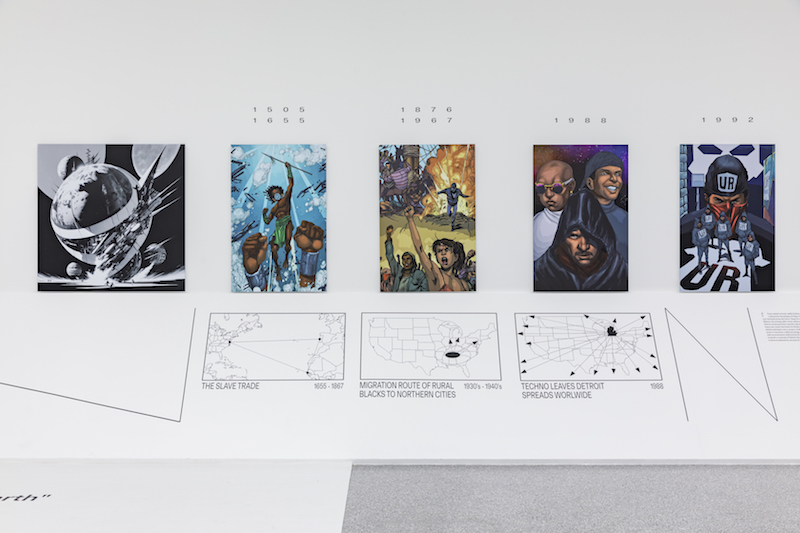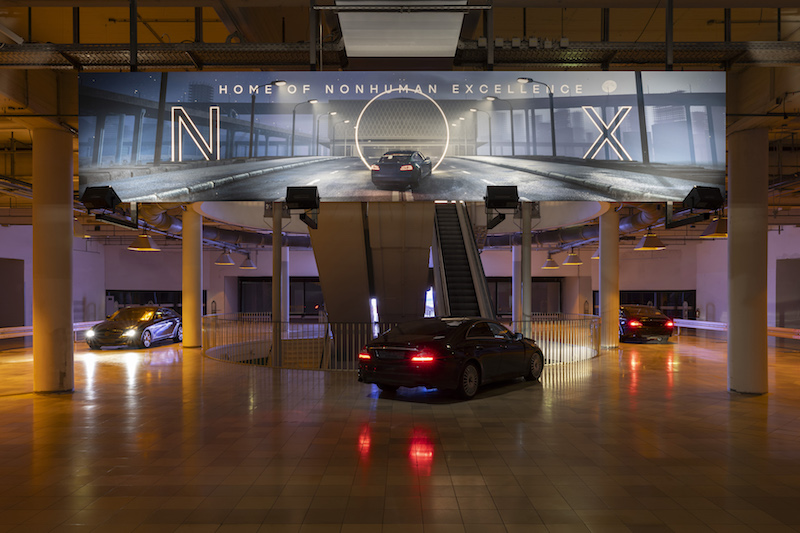by Alison Hugill // Jan. 5, 2024
This article is part of our feature topic Utopia.
It’s difficult to sit down and think about “utopia” right now, as the end of 2023 brought with it heightened feelings of despair about the state of our world: live-streamed violence, fractured communities, genocides and a rapidly warming planet are not exactly inspiring confidence in any kind of bright future for humanity. And yet, where would we be without political and artistic communities committed to thinking through the despair in order to imagine something better?
For awhile, it has been fashionable to label certain aesthetics or kinds of future-oriented art-making as “dystopian”—over-using references to sci-fi, speculative futures run by rogue AI and describing everything as “uncanny.” As we are increasingly living within the reality of this foreshadowed future—the “unheimlich” becoming normalized and very much at home—it might be a good time to re-orient our thinking towards viable alternatives, instead. What could “utopia” mean today? What social and political forms can hope take?

‘HOPE,’ exhibition views, Museion Bozen/Bolzano, 30.09.2023 – 25.02.2024 // Photo by Lineematiche – L. Guadagnini, © Museion
As part of our last topic, Myth, we spoke to musician and theorist DeForrest Brown Jr.—author of ‘Assembling a Black Counter Culture’ and co-curator of the current exhibition ‘HOPE’ at Museion in Bolzano—about the importance of Afrofuturist mythologies for connecting the Black diaspora with its African ancestry, severed by violent colonial impulses and enslavement. Afrofuturism, as a literary and aesthetic genre, has a unique trans-temporal quality, in that it links the past with visions for a utopian future, frequently re-imagining historical events in such a way that they lead to emancipatory or revolutionary outcomes. When asked about how his thinking about techno music connects with the exhibition’s theme of hope, Brown said: “As Afrofuturist Ytasha L. Womack explains in an accompanying text for the exhibition, the term and contemporary usage of hope exists in a similar manner as techno, originating in the modernist Black Civil Rights Movement as a call for society to imagine more than war and oppression.”
It’s worth acknowledging, however, that, historically-speaking, utopia for some has often meant dystopia for others. Describing something aspirational—a social setting that is considerably better than the one we find ourselves in—the concept of utopia also begs the question: better for whom? Next week, dancer, choreographer and installation artist Sasha Amaya will premier her new piece ‘Solo for Boy’ at Dock 11 in Berlin. In an interview with contributor Dagmara Genda, Amaya discusses the once-utopian ideals of beauty—the cult of perfection that has (art) historically surrounded the white, male body—and how she contends with them in her work. ‘Solo for Boy’ is part of a trilogy—including ‘Sarabande’ (2020) and ‘Orfeo’ (upcoming)—which explore, interrogate and reimagine dominant narratives in art history. Thinking through these works, Genda talks to Amaya about the insidious side of utopian thinking that upholds European ideals, and how she works against them, is seduced by them and also questions them.

Sasha Amaya: ‘Solo for Boy,’ 2024 // Courtesy of the artist
In its early, classical usage via Thomas More, utopia was translated from the Greek for “no place.” The use of the suffix “-topia” suggested a specific locality (in More’s writing, a non-existent or fictional island in the “New World”), rather than a specific time or an ethos. In another of our upcoming features, contributor Adela Lovric interviews artist Lawrence Lek about his current exhibition at LAS Foundation in Berlin, in which he considers the implications of this earlier definition of utopia in the context of his show, which centers around a futuristic band of self-driving cars. The setting is like a smart city, he explains, but it’s “half-built, a bit crap, dusty, not much going on.” It owes its smartness to sheer luck, having been built on an important infrastructural route. As Lek explains, “in terms of the utopian question—is utopia an environment or is it a way of living together—I was thinking of this idea of utopia not as a top-down grand plan, but as a gradual improvement over time.”

Lawrence Lek: ‘NOX,’ 2023 // Copyright Lawrence Lek, commissioned by LAS Art Foundation, photo by Andrea Rossetti
This kind of futurist thinking—more aptly coined as “protopian” by co-founder of Wired magazine, Kevin Kelly, in his 2010 book ‘What Technology Wants’—introduces an incrementalist politics grounded in technological progress, the positive effects of which are only revealed over time. Within this subset of “protopian” futurist thinking, a variety of theories and manifestos have emerged over the last decade or more, including recent ideas like “accelerationism” or “xenofeminism,” which advocate for Leftist co-optation of “existing sociotechnic tendencies within capitalism in order to accelerate its demise and transformation into a more equitable system.” On the other end of the political spectrum is billionaire tech investor Marc Andreessen’s recently published manifesto for “techno-optimism,” which proposes that the unrestricted development of AI will give rise to “technologically-augmented supermen and conquerors” and is reminiscent of Italian fascist Filippo Tommaso Marinetti’s 1909 ‘Futurist Manifesto,’ which uncritically celebrated speed, machinery, violence and youth.
Whether utopia is indeed a physical space, a methodology for thinking or a yearned-for social experience, it’s clear that its contents are subject to the interests of the ones proposing it. With this featured topic, we’ll consider how contemporary artists are contending with the lived realities of the past and the present and, in doing so, are imagining a society rooted in, as Brown aptly put it, “more than war and oppression.”






















